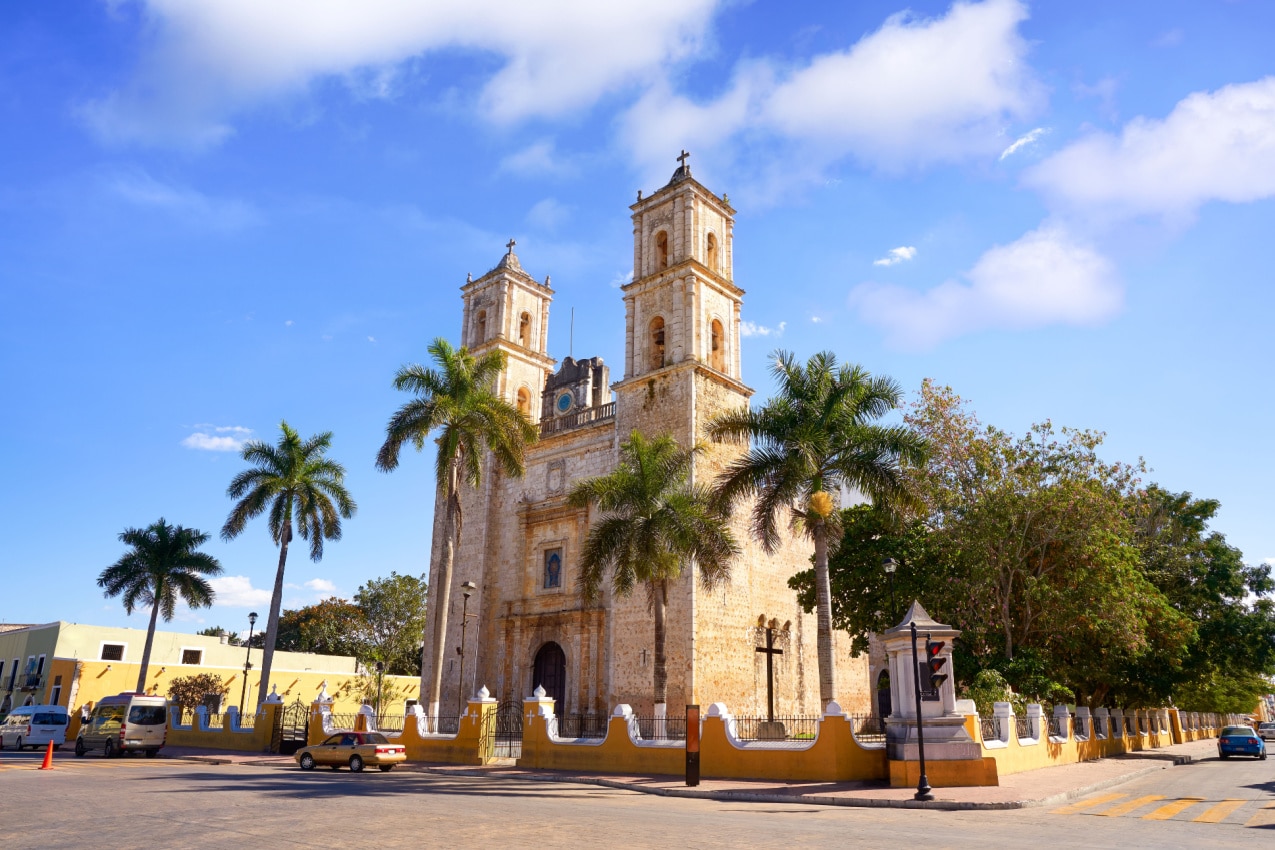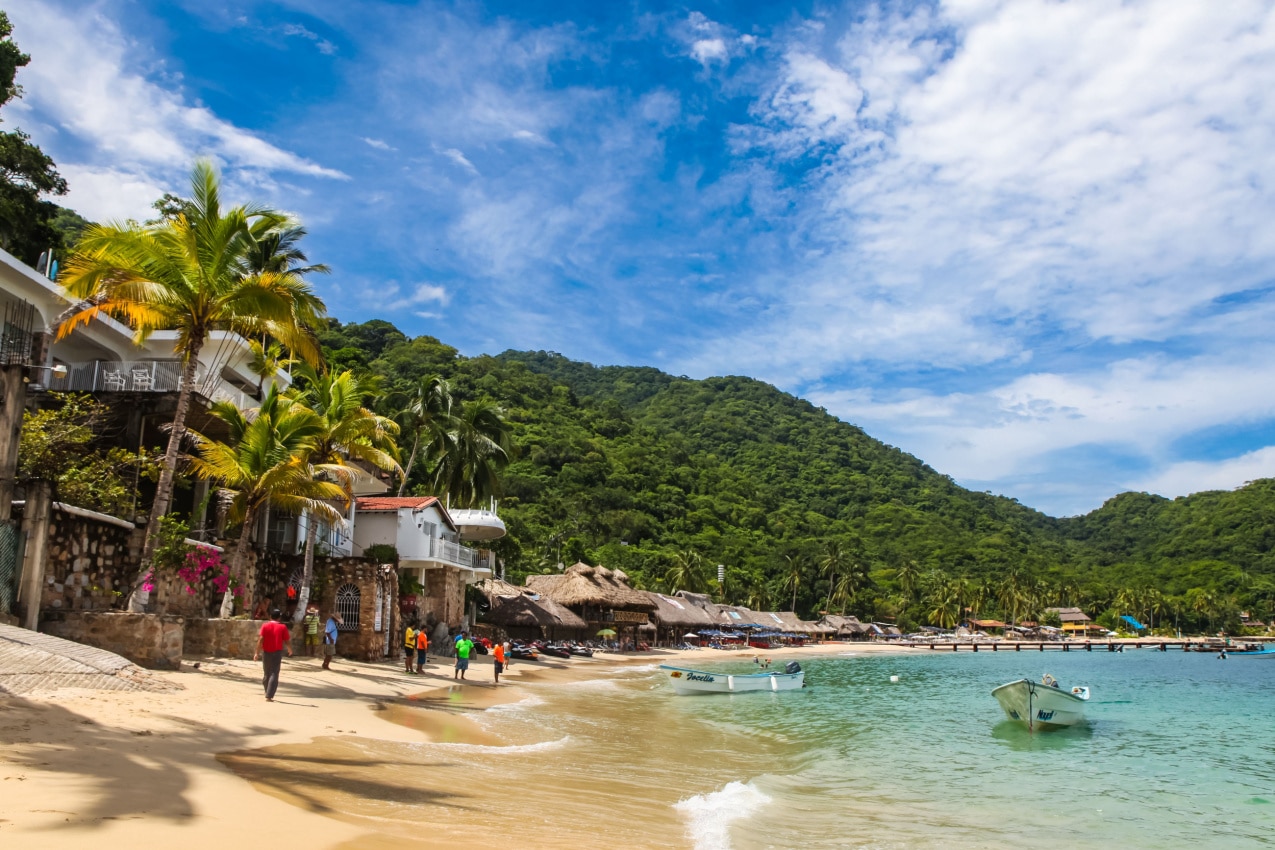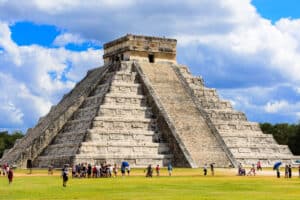Mexico is a festive and beautiful country that provides lots of entertainment and sightseeing opportunities for tourists. From Día de Muertos to top-notch tequila, you’re sure to have a once-in-a-lifetime experience. But the country is also associated with violent crime and cartels, so it’s important to know the areas and times of day you should avoid for your safety.
For instance, Chihuahua would be at the top of many tourist’ travel destinations because of the dog breed that comes from here and the jaw-dropping landscapes. However, it’s not a safe city to visit.
So, before planning a trip to Mexico, it’s best to learn what precautions you should take, what locations to avoid, and how to bypass any potential health risks.
General Tips on How to Travel Safely in Mexico

Here are some general tips on how to stay safe during your time in Mexico, whether you’re traveling solo or with your family:
- Research the area you want to visit extensively before booking a hotel and planning a trip. If there are online reports showing high crime rates at your destination, or specific warnings in official Mexico travel guides issued by the United States, United Kingdom, Canada, or Australia, avoid that area.
- Learn a bit of Spanish, if you have enough time before your trip. It’ll help you understand what locals around you are saying and you’ll know if there’s any source of danger nearby. Or a party only the locals know about!
- Make sure your hotel is a reputable one. Check our guide to learn which hotels in the different areas are the safest and most reputable.
- Bring as few valuable items with you as possible, avoid drawing attention to those you bring, and don’t stand out from the crowd. Especially in crowded places like city centers, conspicuity might lead to potential theft during nighttime.
- Use ATMs to draw money regularly and don’t carry too much cash on your person. When using ATMs, make sure you do it during the day and in central locations.
- Don’t engage in any political demonstrations since foreigners are forbidden from political activities. If you participate in a protest, you could get detained and deported. In Mexico City, political demonstrations are quite common. You can check social media to see if there’s one during the day(s) of your visit, but that’s not fully reliable as these demonstrations can come out of nowhere. What you can do, though, is, leave the area immediately if you see people gathering. The demonstrations in Mexico City can get violent and you may get sucked into it, so be wary.
- Don’t travel during the night. Intercity or interstate road trips in Mexico aren’t safe during nighttime. Even leaving the city center during the night can become problematic because you might lose your way and end up in cartel-controlled territory.
- Only take licensed taxis. In Mexico, licensed taxis have a distinctive plate with a white background. These plates have a capital letter and five numbers. You should only take those. Additionally, the driver’s license should be visible and the photograph on the license should match the driver’s face.
- Engage with strangers as little as you can. Don’t share personal information with someone you just met and don’t accept their invitations even if they’re to a bar very close to your hotel or hostel.
- When you’re traveling interstate, stop if you see any roadblocks. Don’t think that the local rules don’t apply to you just because you’re a tourist.
- Be wary of scams at roadblocks. The UK’s travel guide on Mexico reports cases in which police officers extorted money from tourists for minor traffic violations – especially from those traveling in rental cars. If that happens, request to see the officer’s identity card first. If it’s genuine, ask them for a written bill of the fine, which you can pay later. Under no circumstance should you give the officer money or your passport.
- Regularly check local authorities’ warnings and weather forecasts regarding hurricanes and storms. Not only people but also the weather conditions can get quite violent and nasty in Mexico. Stay on the safe side by being informed.
A State-by-State Safety Guide to Mexico
The United States Department of State Bureau of Consular Affairs has an extensive guide on Mexico travel safety. In this guide, they rank Mexican cities’ safety levels in four categories:
- Do Not Travel: Locations that come with this label aren’t safe at all. There’s a high risk of crime and violence in these locations. The states of Colima, Guerrero, Michoacán, Sinaloa, Tamaulipas, and Zacatecas have earned this ranking.
- Reconsider Travel: The states that have this label aren’t as dangerous as the ones labeled with “Do Not Travel,” but it still won’t be safe unless you travel with a trusted guide and comply with all the safety guidelines we mentioned above. Even with all the precautions, there’s still a possibility, albeit small, that you’ll be subject to petty crime or, worse, abductions. Baja California, Chihuahua, Durango, Guanajuato, Jalisco, Morelos, and Sonora fall in this category.
- Exercise Increased Caution: This refers to states that have had occurrences of crime, but you’ll be safe as long as you follow the tips we outlined above. The category includes Aguascalientes, Baja California Sur, Chiapas, Coahuila, Hidalgo, the Mexico State, Nayarit, Nuevo Leon, Oaxaca, Puebla, Queretaro, Quintana Roo, San Luis Potosí, Tabasco, Tlaxcala, and Veracruz.
- Exercise Normal Precautions: These states are typically safe to travel, but alas, there are only two of them: Campeche and Yucatan.
As long as you stay away from the locations in the first two categories, “Do Not Travel” and “Reconsider Travel,” you’ll be safe in Mexico.
Now, let’s see in more detail why some of the most popular travel destinations from the top two high-risk categories aren’t safe. After this section, we’re going to list all the Mexican tourist hotspots you can enjoy without worry as well, so don’t give in to gloom.
Acapulco
Admittedly, Acapulco, a municipality in the state of Guerrero, is a magnificent city with stunning beaches, breathtaking cliffs, gorgeous cathedrals, and historic forts. And that’s probably why Bob Dylan associates it with “fun” in “Goin’ to Acapulco.”
Yet, Acapulco is not fun anymore, and if you want to have a safe vacation in Mexico, it’s a city that you should not visit under any circumstances. It’s one of the most dangerous cities in Mexico and the state of Guerrero is on the United States “Do Not Travel” list.
According to reports, there are at least twenty cartels that fight for control over the city, which is a staggering number by any means. In most Mexican cities, cartels don’t target tourists and don’t enter tourist-condensed areas, but that’s not the case in Acapulco – in Acapulco, there is no “line of demarcation” between tourists and cartels anymore.
It’s best for you to just forget about going to Acapulco and listen to Bob Dylan in the safety of Cozumel.
Guadalajara
There are lots of reasons to visit the city of Guadalajara: it’s full of gorgeous temples, vivid marketplaces, and tree-lined roads; it’s where tequila and mariachi music come from, and it’s often hailed as “the Pearl of the West.” However, this amazing city is located in the state of Jalisco, which falls under the “Reconsider Travel” category by the United States.
The city of Guadalajara has a crime index of 62.39 (the crime index is measured on a scale of zero to 120, with 120 being the most dangerous and zero the safest) and the sixth-highest number of homicides within the country.
Most of the criminal activities are linked to the activities of two of the most prominent cartels in the vicinity: the Jalisco New Generation cartel and the Nueva Plaza cartel.
On a less tragic note, there’s a high risk of armed thefts in the city of Guadalajara. Plus, the city is almost synonymous with corruption and bribery (with an index rate of 85.28) despite the authorities’ best efforts.
Lastly, it’s not safe to walk out at night in this city, obviously.
So, if you have Guadalajara on your list of places to see in Mexico, it’s a good idea to reconsider it to ensure you travel safely.
Puerto Vallarta
Puerto Vallarta is another coastal city where the jungle meets the ocean. Its historic districts like the Zona Romantica will stun you with their colors. However, like Guadalajara, it’s in the province of Jalisco (labeled under “Reconsider Travel”), and for a safe trip, it’s best not to include this vivid city in your travel list.
It’s a hotspot for the Jalisco New Generation cartel and the violence that comes with this organization.
Even though other online travel guides paint Puerto Vallarta in a brighter color (mentioning expats and a diverse and peaceful demography) than these reports, it’s best to avoid this beautiful city, no matter how heartbreaking the idea is.
Chihuahua
The state of Chihuahua might be mouthwatering for backpackers because it has everything they want: snowy mountains, deep canyons, alpine forests, pristine ravines, and deserts (backpackers might not be sure about this last one). But all these natural beauties also lie on the trafficking routes of cartels.
In crime-related news, the two cartels prevalent are La Empresa and the infamous Sinaloa Cartel. In border cities such as Juarez, the Jalisco New Generation cartel is also active.
The Sinaloa Cartel is often regarded as the largest and most powerful and violent criminal organization in the Western Hemisphere. Most of their power is due to their strong connections with the police and military. So, if you end up in a crime-related complication, it’s unlikely that law enforcement will enforce any justice on your behalf.
So, it’s not enough to stay away from the state of Sinaloa to stay away from the Sinaloa Cartel – you should also avoid traveling in the state of Chihuahua for your safety.
Tijuana
Tijuana, a city located in the Baja California state, is a hotspot for American tourists because it’s just south of San Diego and is known for its wide variety of craft beers. However, the United States Bureau of Consular Affairs considers the area unsafe and labels it “Reconsider Traveling” due to elevated cartel activity.
The city’s proximity to the US border doesn’t only make it attractive for US citizens – it also makes it attractive for cartels. It’s a good spot to set up quarters and routes for drug trafficking operations.
Such popularity also means that there are territorial wars between cartels over dominance. As such, the city of Tijuana was regarded as the most violent city in the world in 2019 according to a Daily Mail report.
The city has a crime index of 71.97 and similarly to Guadalajara, it’s not a safe place to walk around during the night. If you can’t take a night walk to enjoy a beer or two, the world’s beer capital might not be worth a visit. You could, instead, visit during the day, spend the night in a safe hotel in the city center, and leave the following day.
And if you want to move around in Mexico as safely as possible, it’s best to skip Tijuana. That’s why the US Bureau of Consular Affairs specifically urges American citizens to avoid Tijuana and advises the use of Highways 1, 2, 2D, 5, and 8 (all during daytime) for transit.
Safest Places to Visit in Mexico

After all the talk about crime, violence, and what you shouldn’t do, let’s clear the air by telling you where you can enjoy the scenery, cocktails, and nightlife in Mexico in almost total safety.
Valladolid
Valladolid, a city nestled in the eastern region of Yucatan, has the lowest crime index in all of Mexico with 8.28. And it’s a city you can enjoy in safety day and night!
The only put-off for tourists is that it’s not a coastal city, so you won’t be able to relax on a laid-back beach, but the city still has ample sights to offer.
Some of the sight-seeing opportunities in Valladolid are Mayan ruins such as Chichen Itza, Ek Balam, and Cenote Ik Kil, and freshwater underground sinkholes (also referred to as cenotes) where you can swim like Cenote Zaci and Cenote Suytun.
If you want to draw a safe travel route in Mexico, Valladolid should be at the top of your list!
Isla Mujeres
Isla Mujeres, another city in Yucatan, is a true Mexican paradise as it’s where low crime rates (14.71) meet the ocean. In this city, there’s a low risk of crime, and you can enjoy a safe walk to your hotel, hostel, or Airbnb after a night of serious drinking!
You have quite the sightseeing opportunities in Isla Mujeres: white-sand beaches like Playa Norte, Mayan ruins in El Meco, and truly staggering MUSA Underwater Sculpture Park.
You don’t already have Isla Mujeres in your travel plan to Mexico? We hope you can rectify that mistake soon!
La Paz
La Paz, on the shores of Baja California, is another jewel of a city where you’re by the ocean and away from cartel activity. However, although Numbeo deems the city safe to walk day and night, the city’s crime index of 32.88 warrants increased caution.
Making sure you check all the boxes we listed in the general tips section, you’ll have lots to explore in this city. It houses many great beaches on the Sea of Cortez and Balandra, sandboarding fun on dunes, hiking adventures in Sierra de la Laguna, and a trip back in time to Museo Regional de Antropología e Historia de Baja California Sur.
Cozumel
Cozumel is located on the Caribbean coastline of Mexico, in the Quintana Roo state where exercising increased caution would be enough for safe travel. It’s also one of the Mexican cities with the lowest crime index, 34.57, and you can walk around in safety during the night as well as the day.
Will Cozumel’s safety mean you’ll be missing out on an all-around Mexican experience? The answer is fortunately a relieving no!
The city offers all kinds of cuisine options associated with Mexico, and even in coastal restaurants you’ll be paying about $3 for an excellent dish.
Additionally, the ocean around Cozumel is a generous one, be it for surfers or divers. There is a high number of great waves along its beaches such as Punta Morena, Chen Rio, and Playa Bonita, and a remarkably diverse marine life with rare species.
Further reading: 12 Cheapest and Safest Places to Visit in Mexico
Health and Well-Being Tips for Mexico
In Mexico, cartels aren’t the only threats against your safety and well-being (like any other place on Earth). Alligators, insects, and water carry their own risks as well.
Here are some tips that’ll make your trip as safe as possible:
- Be wary of sharks if you want to swim, surf, or dive in the Gulf of Mexico. Not all the sharks are dangerous, but an encounter with one that may prove fatal. Learn all about the sharks in the Mexican Gulf in our related guide.
- Be on the lookout for alligators and crocodiles. Keep your distance if you see one. Don’t ever try to engage or feed them, and stay away from murky water in general. Read our alligator guide thoroughly for more safety tips.
- Make sure your accommodations are insect-free or insect-proof and always carry an insect repellent. Insect-borne diseases such as dengue fever, zika, chikungunya, and leishmaniasis are common in Mexico. It’s best to take all the necessary precautions.
- Stick to bottled water. The tap water in Mexico isn’t safe, and drinking it may lead to gastrointestinal issues and a weakened immune system. So, it’s a safe and excellent idea to travel stocked with bottled water.
Covid-19 Safety
As of late 2023, there are no Covid-19 safety concerns in Mexico. Tourist hotspots such as Quintana Roo, Cozumel, Cancun, or Yucatan have reported little or no coronavirus cases as of late.
A more irrefutable proof of COVID-19 safety in Mexico is that the US Bureau of Consular Affairs no longer featured a special section regarding the pandemic for several months now. The bureau’s official Mexico travel guide deems the coronavirus section obsolete.
Carbon Monoxide Safety
In 2022, six American tourists visiting Mexico City and staying at an Airbnb were poisoned from exposure to carbon monoxide (CO) in two separate incidents. It raised an alarm regarding carbon monoxide safety in Mexico for tourists, and it still remains a concern.
This toxic gas is odorless and colorless, and it’s released into the air every time a fossil fuel is burned. Fossil fuels are used to power various machines and appliances (automobiles, stoves, furnaces, grills, and so on) including ones in our homes. The danger is when there’s a CO leak in closed spaces, where they can lead to fatal poisoning.
The best way to ensure that you won’t risk carbon monoxide poisoning is to call your host in Mexico and ask them whether they have a functional CO detector installed in the accommodation. You may also extensively inquire whether there’s any possibility for carbon monoxide buildup in your lodging by inquiring about any furnaces, grills, and stoves.
The most common carbon monoxide poisoning symptoms are headaches, chest pain, weakness, dizziness, stomach problems, vomiting, and confusion. So, if you recognize any of these symptoms, you immediately need to get out and call 911.
Weather in Mexico
Mexico is near the equator, so the climate of the country is tropical – with dry and rainy seasons – and stable temperature levels of 50 to 90 degrees Fahrenheit throughout the year. However, if you want to avoid getting caught in hurricanes or torrential rainfalls during your trip, avoid traveling during the rainy season.
In Mexico, the dry season typically starts in November and ends in May. This is the best time to visit the country. You’ll experience warmth, little wind, and no rain. Don’t worry about the heat – all the local craft beer brands will help you quench your thirst in style.
Between May and October, the country gets lots of small tropical storms. Sometimes, these storms die down after wreaking havoc on an unsuspecting fishing town. Other times, depending on the wind, they quickly turn into violent hurricanes.
Hurricanes aren’t the only safety risk in Mexico when it comes to the weather. Due to torrential rainfall, floodings might occur as well, and especially if you’re traveling through the backcountry, these floods could hinder your trip.
So, when you have to travel to Mexico during the rainy season, it’s best to keep a close eye on weather forecasts and stick to highways as much as possible.
Natural Disaster Risk in Mexico
Besides hurricanes, flooding, and torrential rain, you should be wary of the following natural disaster risks when planning a trip to Mexico:
- Earthquakes: In Mexico, earthquakes are an everyday occurrence. The country is located along the “Ring of Fire”, a seismic activity line that spreads from the eastern coasts of Australia to the western coasts of South America. 90% of seismic activity on Earth takes place along the Ring of Fire and Mexico is not an exception. Yet, there’s no reason to worry because both the state of Mexico and its accommodations are usually well-equipped to deal with such natural disasters. For instance, a 7.6-magnitude earthquake that happened in 2022 caused only two casualties.
- Tsunamis: After every earthquake, tsunamis are expected on Mexican beaches. Their severity depends on the wind and the earthquake’s magnitude. Most Mexican hotels and beaches have their own evacuation plans in case of earthquakes and tsunamis. If you’re enjoying life on the beach when an earthquake hits, follow that plan to the word.
- Landslides: During the rainy season, you might experience landslides due to heavy rainfall – especially if you’re hiking or driving through rugged terrain. If such a landslide prevents you from proceeding, you may call 911 (yes, the same number we use in the US) to ask for assistance.
- Wildfires: Wildfires are a new reality we need to acclimate ourselves to. They’re on the rise because of the climate crisis. During the dry season, Mexico suffers from wildfires to an alarming degree. In the first three months of 2021 alone, 2,871 wildfires that burned 73,459 hectares of land were recorded. Wildfires are easy to recognize, and you need to evacuate the area as soon as possible. If you have respiratory problems, the decrease in air quality may affect you, so make sure you pack all the necessary medications.
Beach Safety in Mexico

We already covered beach safety points like encounters with sharks and tsunami protocols. But there’s more to know regarding beach safety – especially since Mexican authorities are a bit fed up with tourists who don’t know how to read beach flags that tell you whether the beach is safe or not, and what to be careful of.
Here’s what the beach flags that come in five different colors mean in Mexico:
- Green flag: Green flag means that it’s safe to go into the water.
- Yellow flag: If you see a yellow flag on the beach, it means the waves require increased caution. In such cases, those who are not great swimmers, the elderly, and children must stay away from the water. You can lay back on the beach and appreciate the dexterity of better swimmers and, if there are any, surfers.
- Red flag: Red flags don’t only refer to potentially toxic people – in Mexico, they warn you against hazardous wave conditions like high surf. So, if you’re looking for a peaceful swim, it means it’s not the time. Experienced surfers might still want to show off their abilities.
- White flag: You may think that a white flag would mean safe and peaceful conditions, but that’s not the case! In Mexico, if you see a white flag on a beach, it means that there are jellyfish in the water. Jellyfish are an invasive species and some jellyfish types have stinging cells, so it’s a good idea not to swim when you see a white flag.
- Black flag: Black flag means the beach is closed to everyone. It might be due to a rip tide, violent waves, or sharks. In any case, avoid a beach if you see a black flag.
Key Takeaways
For safe travel in Mexico, research the areas you want to visit beforehand and heed the travel advice issued by the United States Department of State Bureau of Consular Affairs. If the bureau categorized the places you want to visit as either “Do Not Travel” or “Reconsider Travel,” you should reroute your trip.
That being said, the locations that come with a label of “Exercise Increased Caution” aren’t perfectly safe either. If you plan to visit such places, you should book a safe hotel, carry as few valuables as possible, use ATMs for withdrawing money in small amounts during the daytime, and travel only in daylight. (That way you’re safe from vampires, too.)
If you take a taxi, you need to make sure it’s licensed by checking out the plate and seeing the driver’s license. If you are traveling with a rental car, you need to be wary of potential scams on the police’s part. You should never travel during the night, even in places deemed relatively safe.
Should you engage in political demonstrations in Mexico, you’ll get detained and deported.
Stick to bottled water and use insect repellants regularly. Pay attention to the flags at beaches and watch out for theethy reptiles near bodies of water.
And, lastly, it’s best to keep an eye on weather forecasts because hurricanes and storms could ruin what would otherwise be a lovely time.



